Have you ever heard the saying, “Oil and water don’t mix”? For this easy science experiment, we observe exactly what does happens when we mix oil and water, then we’ll add another item to the mix to see how it changes!
With only a few common kitchen items, kids can explore density and the reaction of adding an emulsifier (dish soap) to the experiment. A printable instruction sheet with a materials list, demonstration video, and a simple scientific explanation are included.

JUMP TO SECTION: Instructions | Video Tutorial | How it Works
Supplies Needed
- Glass Jar with a lid (a pint canning jar works great)
- 1 cup Water
- Food Coloring
- 1 cup Oil (we used vegetable oil)
- 2 teaspoons Dish Soap
Mixing Oil & Water Science Lab Kit – Only $5
Use our easy Mixing Oil & Water Science Lab Kit to grab your students’ attention without the stress of planning!
It’s everything you need to make science easy for teachers and fun for students — using inexpensive materials you probably already have in your storage closet!
Mixing Oil & Water Science Experiment Instructions
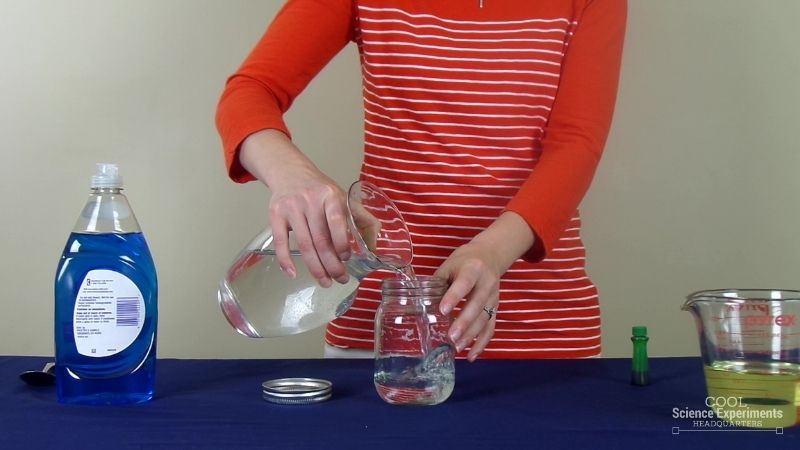
Step 1 – Start by filling the jar with 1 cup of water.
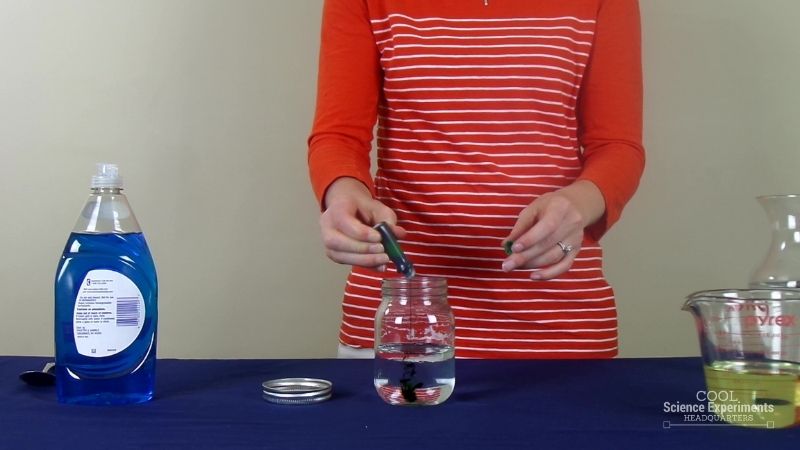
Step 2 – Add a few drops of food coloring to the water and stir until combined. Make some observations about the water. What happened when the food coloring was added? Was it easy to mix the food coloring into the water? Does the food coloring stay mixed with the water? What do you think will happen when we pour the oil into the jar? Write down your hypothesis (prediction) and then follow the steps below.
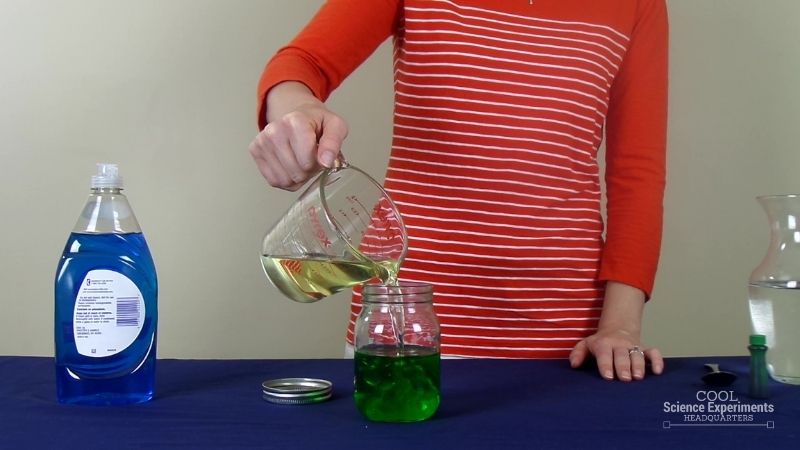
Step 3 – Next pour 1 cup of oil into the jar. Make a few observations. Does the oil behave the same was as the food coloring did when you added it to the water?

Step 4 – Securely tighten the lid on the jar and shake it for 15-20 seconds.
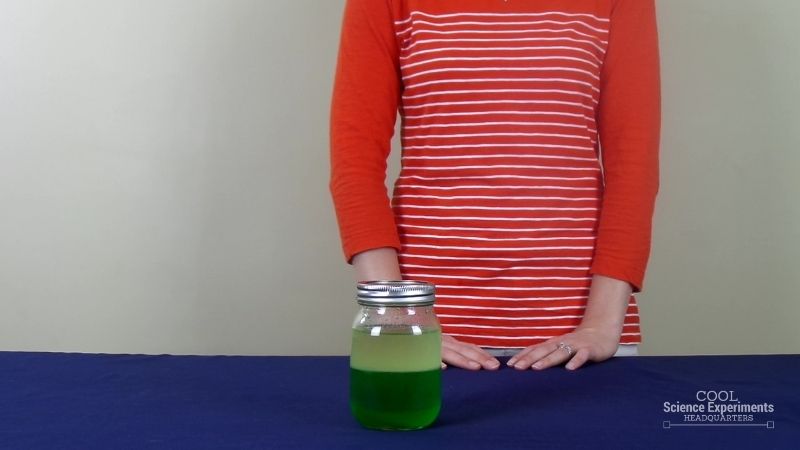
Step 5 – Set the jar down and watch the jar for a couple of minutes. Observe what happens to the oil and the water and write down your findings. Did the oil and water stay mixed together? Was your hypothesis correct? Do you think there is anything else that can be added to the jar to prevent the oil and water from separating?
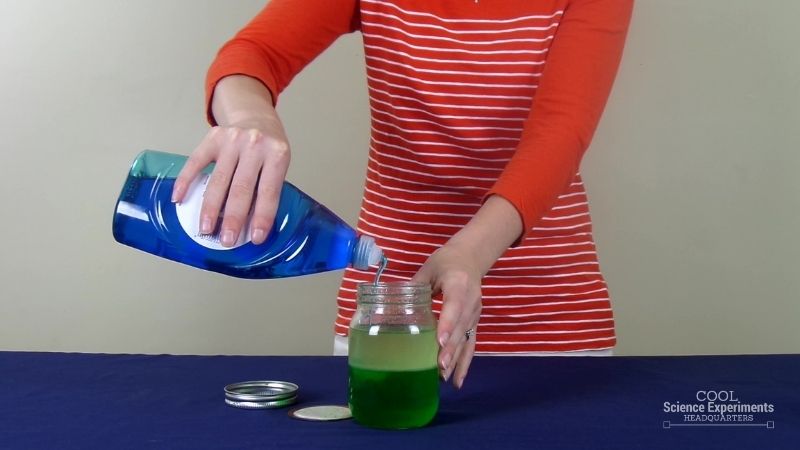
Step 6 – Next, take the lid off the jar and squirt in 1-2 teaspoons of dish soap.
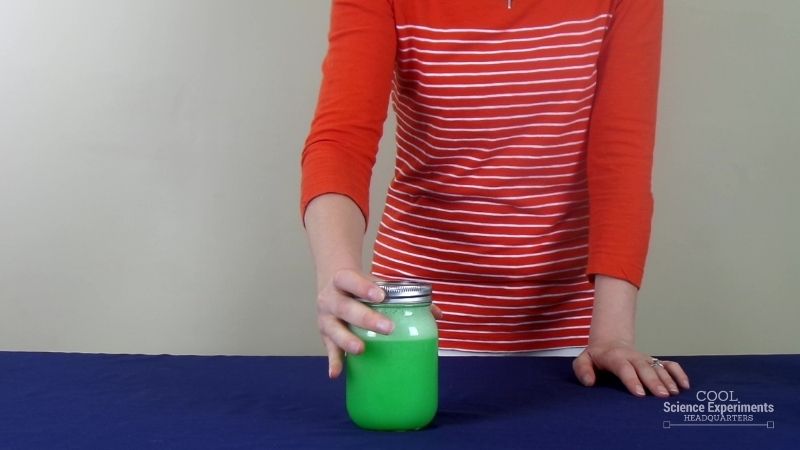
Step 7 – Tighten the lid back on the jar and shake again for another 15-20 seconds.

Step 8 – Set the jar down and watch the liquid for a minute or two. Observe what happens to the oil and the water now that the dish soap has been added to the mix. Write down your findings. Did the oil and water stay mixed together this time? Do you know why adding the dish soap preventing the oil and water from separating? Find out the answer in the how does this experiment work section below.
Video Tutorial
Mixing Oil & Water Science Experiment Video Step by Step Instructions
How Does the Science Experiment Work
The first thing you will observe is that oil and water will not stay mixed together, no matter how hard you shake the jar. Instead, the oil slowly rises to the top of the water. This is because of the density of the two liquids. Density is a measure of the mass per unit volume of a substance. Water has a density of 1 g/mL (g/cm3). Objects will float in water if their density is less than 1 g/mL. Objects will sink in water if their density is greater than 1 g/mL. The oil is LESS dense than the water. This is because the molecules of oil are larger than the molecules of water, so oil particles take up more space per unit area. As a result, the oil will rise to the top of the water.
The second thing you will observe is that adding dish soap to the mixture changed the results of the experiment. When oil, water and dish soap are mixed together, the oil and water don’t separate like they did when they were the only two items in the jar. This is because of the chemistry of the oil, water and soap molecules.
Oil (and other fats) are made of nonpolar molecules, meaning they cannot dissolve in water. Water is made of polar molecules that can dissolve other polar molecules. Soap is made of molecules that have a hydrophilic (“water-loving”) end and a hydrophobic (“water-fearing”) end. Without soap, water and oil cannot interact because they are unlike molecules. When you add soap to the mixture, the hydrophobic end of the soap molecule breaks up the nonpolar oil molecules, and the hydrophilic end of the soap molecule links up with the polar water molecules. Now that the soap is connecting the fat and water, the non-polar fat molecules can be carried by the polar water molecules. Now the oil and water can be mixed together and stay mixed together!
Mixing Oil & Water Science Lab Kit – Only $5
Use our easy Mixing Oil & Water Science Lab Kit to grab your students’ attention without the stress of planning!
It’s everything you need to make science easy for teachers and fun for students — using inexpensive materials you probably already have in your storage closet!
I hope you enjoyed the experiment. Here are some printable instructions:
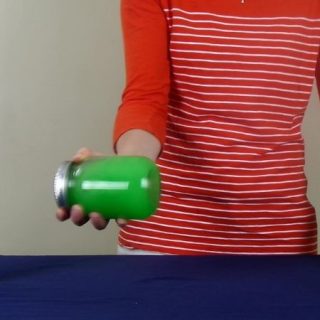
Mixing Oil & Water Science Experiment
Materials
- Glass Jar with a lid (a pint canning jar works great)
- 1 cup Water
- Food Coloring
- 1 cup Oil (we used vegetable oil)
- 2 teaspoons Dish Soap
Instructions
- Start by filling the jar with 1 cup of water.
- Add a few drops of food coloring to the water and stir until combined.
- Pour 1 cup of Oil into the jar.
- Securely tighten the lid on the jar and shake it for 15-20 seconds.
- Set the jar down and watch the liquid for a minute or two. Observe what happens to the Oil and the Water.
- Next, take the lid off the jar and squirt in 1-2 teaspoons of dish soap.
- Tighten the lid back on the jar and shake again for another 15-20 seconds.
- Set the jar down and watch the liquid for a minute or two. Observe what happens to the Oil and the Water now that the dish soap has been added to the mix.
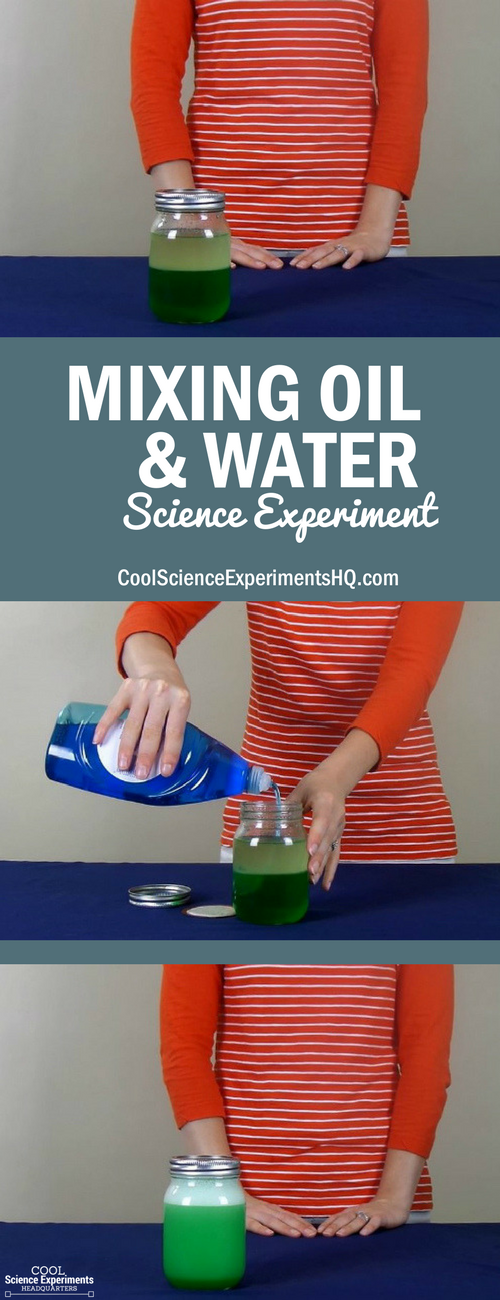


Super ….. !
Hi ! This gives us really good experiment
This was the best science fair project ever
Cool ?
This experiment is fun